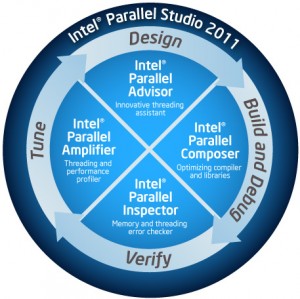When I was studying computer programming in college many years ago, I didn't imagine that our work could impact lives, particularly in a negative way. We've heard reports (mostly true) of death, dying, and destruction as a result of software problems, such as the time a plane flew right into a mountain due to the users not being informed of changes to the software. (For more interesting tidbits, check out the check out this Software Horror Stories page .)
We can never predict what kind of bizarre things will happen as a result of software bugs, but today's news is certainly odd: This weekend daylight savings time ended in many parts of the world (but not in the US yet), and the Apple iPhone's alarm didn't handle it properly. When I travel, I almost always rely on my phone's alarm to get me up at the right time. But apparently a lot of people use their phones every day. And yesterday morning millions of Europeans didn't wake up at the right time thanks to the iPhone bug .
Prior to about--oh, I don't know--1970?, there was an easy answer: Just avoid software if your life depends on it. But that, of course, isn't possible today. Nearly everything we use today runs on software. Just in my house alone, I can think of many things that rely on software: The TV (and the gazillion things hooked up to it), the microwave oven, the regular oven, the …

 Here at DaniWeb, we've talked a lot about
Here at DaniWeb, we've talked a lot about 
 Almost every programmer knows his name. He's a living legend in computers. His name is Bjarne Stroustrup, and he created the world's most popular programming language, C++. I had a chance to ask him a few questions. The first three of the questions I came up with, and the remainder I selected from the numerous questions suggested by DaniWeb community members. So sit back, and listen to the words of one of the greatest programming masters ever. (My questions are noted with "JC"; questions from the DaniWeb community are noted as "DW".)DANIWEB (JC): On your home page for your teaching, I see you're doing research in scalable parallel software. I know that parallel processing is now a reality for most desktops, with multi-core processors now common. I was wondering if you might tell us just a bit about that, such as what you're exploring right now in that field, and what exciting things are going on that might spark some interest in parallel programming with our readers?
Almost every programmer knows his name. He's a living legend in computers. His name is Bjarne Stroustrup, and he created the world's most popular programming language, C++. I had a chance to ask him a few questions. The first three of the questions I came up with, and the remainder I selected from the numerous questions suggested by DaniWeb community members. So sit back, and listen to the words of one of the greatest programming masters ever. (My questions are noted with "JC"; questions from the DaniWeb community are noted as "DW".)DANIWEB (JC): On your home page for your teaching, I see you're doing research in scalable parallel software. I know that parallel processing is now a reality for most desktops, with multi-core processors now common. I was wondering if you might tell us just a bit about that, such as what you're exploring right now in that field, and what exciting things are going on that might spark some interest in parallel programming with our readers?![product_suite_image1[1].jpg](https://static.daniweb.com/attachments/3/product_suite_image1%5B1%5D.jpg) Since the release of the second edition of Parallel Studio this month, I've spent a good amount of time with it, trying out the new features.
Since the release of the second edition of Parallel Studio this month, I've spent a good amount of time with it, trying out the new features. 



 In the past, the wordembedded was limited to specialty devices that a lot of us used, but few programmers really cared about. Embedded devices meant things like the controllers on your microwave oven or the computer that ran your car's fuel injection system. There are certainly a lot of software engineers working in that realm, but for those of us who program for PCs, we had little interest in embedded technology.
In the past, the wordembedded was limited to specialty devices that a lot of us used, but few programmers really cared about. Embedded devices meant things like the controllers on your microwave oven or the computer that ran your car's fuel injection system. There are certainly a lot of software engineers working in that realm, but for those of us who program for PCs, we had little interest in embedded technology. That's why we need to know about Intel's Atom processor. The Atom processor is an x86-based processor (and now dual-core!), but it's used in small devices, whether it's a phone, a netbook, a slate computer, or even any number of other devices. (Here at Intel IDF they showed us a motorcycle with an on-board Atom processor that reports data back to the racing team.)
That's why we need to know about Intel's Atom processor. The Atom processor is an x86-based processor (and now dual-core!), but it's used in small devices, whether it's a phone, a netbook, a slate computer, or even any number of other devices. (Here at Intel IDF they showed us a motorcycle with an on-board Atom processor that reports data back to the racing team.) Today at Intel's IDF 2010 was the official launch of the 2011 version of Intel Parallel Studio. Parallel Studio is a set of tools that enhance Visual Studio to support full parallel programming.
Today at Intel's IDF 2010 was the official launch of the 2011 version of Intel Parallel Studio. Parallel Studio is a set of tools that enhance Visual Studio to support full parallel programming. Of course, if you're doing computations in a loop, it's probably not just a simple matter of running the iterations concurrently in separate cores, as each iteration might rely on the results of earlier iterations. But that's not a problem with the help of tools shipping with the new 2011 version of Parallel Studio. There's an entire library available called the Parallel Building Blocks that makes such computations easy. Combine that with …
Of course, if you're doing computations in a loop, it's probably not just a simple matter of running the iterations concurrently in separate cores, as each iteration might rely on the results of earlier iterations. But that's not a problem with the help of tools shipping with the new 2011 version of Parallel Studio. There's an entire library available called the Parallel Building Blocks that makes such computations easy. Combine that with … I'm here at the Intel Developer Forum 2010 in San Francisco, and this has been a great opportunity for a programmer such as myself. While most programmers might think of Intel as a hardware manufacturer and look to other companies (such as Microsoft) for their development tools, in fact that couldn't be further from the truth. In addition to creating some amazing hardware technology, Intel has a huge set of tools for developing software that runs on the devices and computers powered by their technology.
I'm here at the Intel Developer Forum 2010 in San Francisco, and this has been a great opportunity for a programmer such as myself. While most programmers might think of Intel as a hardware manufacturer and look to other companies (such as Microsoft) for their development tools, in fact that couldn't be further from the truth. In addition to creating some amazing hardware technology, Intel has a huge set of tools for developing software that runs on the devices and computers powered by their technology. In a blog posting August 26, Microsoft announced that it is revising the licensing terms of its Security Development Lifecycle, moving parts of it to a Creative Commons license.
In a blog posting August 26, Microsoft announced that it is revising the licensing terms of its Security Development Lifecycle, moving parts of it to a Creative Commons license.



